HOME | ABOUT US | MEDIA KIT | CONTACT US | INQUIRE
HOME | ABOUT US | MEDIA KIT | CONTACT US | INQUIRE
Before they enter a regional work force more than 1 million strong, young people from across the two-state region—indeed, from across America and around the world—make their way through the educational systems in Kansas and Missouri, from K-12 public schools to a network of community colleges and technical schools, from private colleges that really do have ivy-covered walls to the sprawling campuses of state-funded colleges and research universities.
The academic success of those students is by no means assured: Yes, much of it depends on their own personal initiative, but it’s also the product of a process—one that encompasses the life’s work of campus executives, deans and professors, school district superintendents and teachers, and many thousands of staff workers who perform their tasks in comparative anonymity.
What they do matters, because they build a framework for that academic achievement. Those front-line instructors and administrators have done the hard work of crafting relevant academic programming and providing ivital guidance and counsel to their students. We see the results of their labors in the quality of prospective employee who emerges each spring with diploma in hand.
In terms of leadership, this region’s public school districts, private schools, community colleges and universities have been truly blessed. So once again, Ingram’s honors some of those leaders with this 2016 installment of “Icons of Education.”
These 11 individuals have devoted their careers to passing the torch of knowledge on to future generations. Join us, then, in saluting them, along with the legions of others whose contributions helped make this region’s educational system a foundational element of our business environment and our quality of life.
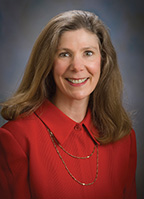 April Mason
April MasonKansas State University
Not long after she had earned tenure status at Purdue University, April Mason was asked by a senior faculty member if she would be interested in attending a workshop. Topic: Women in higher-education administration. Her answer was a resounding … maybe.
Fortunate, then, not only for Purdue, but eventually K-State, that she didn’t rule it out. She attended that three-week summer program, lived with other women who were presidents and chancellors of other institutions, and soon found a new career path. “It was quite pivotal for me,” Mason recalls. “I was challenged to think about what I wanted to do and when I wanted to do it.”
Her take-away was: You need to think about this stuff. “It was more about setting goals for yourself as an administrator—that was definitely eye-opening: Don’t just let life happen; work toward those goals, prepare yourself to meet those goals.”
Mason is a native of Akron, Ohio, whose father worked for Firestone, a heavyweight in the U.S. tire market. He was transferred to Firestone Europa, which meant young April did junior high and high school in Italy before returning to the U.S. to earn her degree in biology from Mount Union College in her home state.
Then it was on to Purdue for her graduate degrees, and eventually, a faculty position. Not long after that career-changing workshop, she made full professor, then associate dean. The dean in her department “was very good; he wasn’t going anywhere,” Mason said, so in 2004, after 23 years in West Lafayette, Ind., she traded plains for mountains and became dean of the college of applied human sciences at Colorado State University.
Like those two schools, Kansas State is a land-grant university, and when the opportunity came up to take a senior leadership position and oversee a university’s academic programming and defend its academic standards, she made the move to Manhattan.
For someone with wealth of research in her background, it’s been a particularly good fit. As construction progresses on the federal National Bio and Agro-Defense Facility adjacent to campus, and on K-State’s own Biosecurity Research Institute, the center of the nation’s food-related research is tilting toward Manhattan.
“We’re becoming more attractive as a university because of the synergy,” Mason says. “Especially for potential faculty members who might be looking at where they want to be, what they want to accomplish in their careers, and where they want to do their own research.”
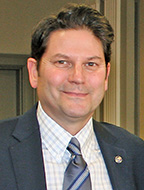 Jim Guthrie
Jim GuthrieUniversity of Kansas
An anthology of microbiology’s best one-liners might fit onto a single sheet of paper, but whatever its size, Jim Guthrie’s dad surely earned his place on it. When informed by his son that he was considering dropping out of the MBA program, Robert Guthrie offered a smile and a parental prod: “Stick it out, Jim,” he said. “If penicillin can be made out of mold, I am sure they can make something out of you.”
The younger Guthrie did just that, and since 1988, he’s been at KU, where he’s associate dean of academic affairs, the William and Judy Docking Professor of Business—and yet another example of how this region can get its hooks into most anyone, even a self-described “east coast guy.” “I didn’t know anything about Kansas and KU prior to my campus visit in 1988,” Guthrie says. “I liked the beautiful college town of Lawrence and the people I met during that visit.” So he consider himself lucky that KU had an opening that coincided with his Ph.D. completion, that KU’s first choice for the position turned them down, and that his wife, Diane, agreed that they could try it out for a couple of years to see how it goes. “I guess it’s gone pretty well,” Guthrie says, “since we have been here nearly 30 years.”
He was swathed in education as one of six children growing up in Buffalo, N.Y., calling his parents “big supporters of education for education’s sake.” And when the time came to set his career path, higher education appealed to him because “I like the intellectual vibrancy of universities and the opportunity to engage in research to inform the practice of people management,” he says. “I also love having the opportunity to help build and support academic programs and to help develop and influence future leaders and employers.”
The particular challenge of business-school instruction, he says, a bit more acute than for other academic program designers seeking to keep instruction current and relevant. “The employment and educational marketplace are fairly dynamic and successful business programs will need to be nimble to meet both the needs and desires of employers and students,” he says. “Our faculty and staff are constantly having conversations about where we are and, importantly, where we need to be.”
But while striving to get there, Guthrie says, “it is critical not to lose sight of the enduring principles of leadership and organizational effectiveness that are the backbone of personal and business success.”
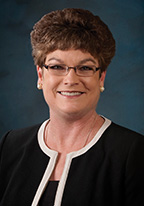 Bonnie Humphrey
Bonnie HumphreyMissouri Valley College
A farm-girl’s work ethic took Bonnie Humphrey to the top of private-college administration, but steadying her hand as president of Missouri Valley College today is guidance she received long ago from her father. “My dad used to tell me that how you said something was just as important as what you said. I think about that all the time” when dealing with the different constituents that have an interest in the small private college in Marshall, Mo.
From the first moment she stepped into the kindergarten classroom all the way though high school, she says, “I loved every subject,” and she knew early on that she would be an educator. But of what? “My hardest decision was deciding on a major because I enjoyed everything,” she said. “I finally decided on English and began my career teaching junior high students.” That came in the Salisbury school district for 12 years, then a decade at Moberly Area Community College, her first administrative position, as the academic dean. She took her current job in 2001 after a friend working at MVC called me and said the college needed her help. “The college was a bit in disarray and the challenge to ‘fix it’ was the strong draw,” Humphrey says.
It was love at first task: “I loved working with faculty and I loved the students. I found Missouri Valley College to be a beautiful little school in the middle of Missouri that had wonderful traditions and a wonderful history,” she says. “I thought it just needed some love and attention and that suited me.”
Perhaps her biggest contribution there has been changing the culture. Upon her arrival, she remembers, it was hard to find people excited about new ideas. “Now we think in terms of What IS Possible for Us? We have added new majors and consolidated old ones to address the current educational needs of today’s students. We have a strong, academically sound faculty with the philosophy to educate students with great classes based on an active learning philosophy and by personal interaction with our students outside of class.”
The campus has also completed more than $25 million in improvements over the past decade, and is in stronger financial condition than it had been for decades. “We still have our struggles,” Humphrey says, “but we are united as a campus to address those issues.”
It’s been life-changing on a personal level, too. She and her husband, a public-school educator, have seen two of their three children and a son-in-law graduate from MVC. Reflecting on their experiences, she says, “my greatest hope and desire is that as an academic community, we can equip our graduates to become productive citizens of the world.”
 Lynette Olson
Lynette OlsonPittsburg State University
Her educational background was in family life and development, and most of Lynette Olson’s career in higher education has been devoted to just that—developing and improving people, processes and programs.
Funny thing about that kind of work: By immersing herself in the task of developing others, the person undergoing the most profound developmental change just might have been … Lynette Olson.
“When I came here, there were a number of reasons—let’s be honest—why I shouldn’t have accepted that position at that time,” says Olson, now provost and vice president of academic affairs at Pitt State. “But the dean of the college made such a compelling argument to me, and I ultimately stepped into his role after a national search for the arts and sciences position. So it’s been a great atmosphere for me to grow and develop as a human being and as an administrator.”
During her time as a student at Ozarks Christian Col-lege in nearby Joplin, this farmer’s daughter would take U.S. 69 on her trips back to her parents’ home to northeast Nebraska, passing the campus of her future employer without giving it much thought. As she closes in on 20 years of administrative work in Pittsburg, she wonders whether the college, even then, wasn’t serving as a reference point in her life.
Her path to higher education, and ultimately to academic administration, was not a straight line, but it was one marked with what she calls “great mentors” because “I think they saw in me something I didn’t necessarily see in myself.” That was clarified when she was working at South Dakota State University and was passed over for a position at another institution.
“One of the points of feedback I got from the committee was that ‘You sound more like an administrator,’ ” Olson recalls. “I thought ‘what an insult!’ but it wasn’t: What they heard from me was an ability to think beyond my discipline. I turned that around and thought of it as a positive, and maybe something I ought to embrace.”
Result? She’s been able to live, in her words, vicariously, by having a hand in the success of others.
“It’s much more exciting for me to hear about the successes of others, and realizing that, no matter how small my influence was in getting them to that point, I enjoy it as much as if they were my own accomplishments,” Olson says. “That’s what energizes me.”
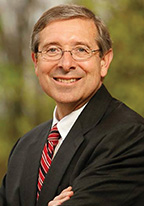 David Sallee
David SalleeWilliam Jewell College
Coming out of high school in Forth Smith, Ark., David Sallee had a plan: He would go on to play college basketball, get his degree in physical education, and then coach.
He’s done all of that, but he gave up the whistle and clipboard long ago to coach on an entirely different level, one that has taken him to the pinnacle of campus administration as president of William Jewell College in Liberty.
His is a familiar spin on the cautionary tale of Be Careful What You Wish For. “I got to a point, coaching women’s basketball and working as athletic director, where I just wasn’t home much,” he says of his career transformation. “I just didn’t think I wanted to do that for the rest of my life.” That realization struck while he was at Oklahoma Baptist University, and happily coincided with an opening in the advancement office. A year in fund-raising led to a position in enrollment and financial aid, and the hook was set. “That set me on the path,” he says. “At least it was a more reasonable lifestyle, and that’s what I really was after—some way to be more engaged with my family.”
From there, he moved on to enrollment management at Luther College in Iowa, and in 2000, he became president at William Jewell, where his tenure was largely defined by a pair of storms in 2003. One was the May 4 tornado that struck the Liberty campus; the other was a showdown that fall over matters of control, which led the Missouri Baptist Convention’s vote to cut off a 154-year history of funding for the college.
In neither case was giving up an option. “We were blessed with great support,” Sallee says of the storm aftermath. “Terry Dunn was here the day after and was asked when school would start in the fall, and he said. ‘We will have you ready.’ They did. That means a huge amount to have someone like that step up beside you, and we had really good work by the staff to make that happen.”
The fight with church leadership was a defining moment in the college’s history. “At its most basic level, that dispute was about academic freedom and institutional autonomy,” Sallee recalls. “The convention was not supportive of either of those concepts.”
The split revealed the differences between various Baptist sects, including Sallee’s own interpretation of his faith. But he stood on his principles: “It’s hard to be committed to rigorous academic pursuits,” Sallee says, “if there are fences around how you do your work and the kinds of things you can address.”
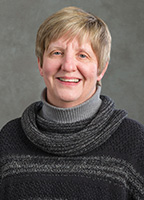 Diane Karius
Diane KariusKansas City University of Medicine and Biosciences
A few years ago, Diane Karius bumped into a clearly distraught student in the hallway, nearly in tears after having bombed a physiology test, and fearful that she’d flunk out of KCU because of it. Karius invited her into the office, and they talked for a while. The girl calmed down, left the office, and life went on.
As it turns out, the young student had passed that test. “The next time I saw her was at her graduation two or three years later,” Karius remembers. “It was a complete fluke, but I got to hood her. As I congratulated her, she told me that when I ran into her in that hallway, she was planning to withdraw from school because she clearly did not have what it took to be a doctor.”
Not all of the encounters Karius has with prospective physicians leave a psychic mark like that one, but it’s a good example of why medical education is the path she chose in life. Karius is director of the human simulation lab at KCU, and an associate professor of physiology there. She’s a Chicago-area native who had an early fascination with physiology—more interested in looking at a beef heart and wondering how blood got from Point A to Point B, she says, than understanding how to tie her own shoes at age seven. “I made the decision to ‘be a doctor and do research’ without fully understanding exactly what that meant,” she says.
As a graduate student at The Ohio State University, she was horrified to hear a fellow student remark that “we already know everything there is to know in science.” “That such a well-educated person truly believed that we knew all there was to know when it came to science was terrifying to me,” Karius says, “and led me to look at how science is taught and how scientists present their information.”
After a post-doctoral fellowship at the University of Kentucky, she came to Kansas City in 1994, pleasantly surprised to find students who were carrying full academic loads but still volunteering with neighborhood mentoring and local health inititiaves. “These weren’t one-time, organization-sponsored events—this was on a weekly basis,” Karius says. “That dedication to service really spoke to me.”
She’s deeply immersed in a field where technology is making dramatic changes in what can be taught, and how. “There are so many possibilities the farther we move out from the present,” Karius says. “I haven’t decided which ones are most likely to advance health-care simulation over the next decade or two.”
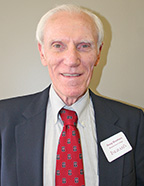 Doug Brothers
Doug BrothersBenedictine College
Before her son would leave his native Waukegan for college, Doug Brothers’ mother secured for him a PTA academic scholarship for teacher education. Value: $1,000 a year, renewable.
“At that time, tuition at Northern Illinois University was $65 per semester and room and board was about $350 per semester, so $1,000 per year covered my college expenses!” he marvels. But physics had more appeal than teaching, so a change in majors required paying back that PTA largesse. And wouldn’t you know it—irony alert here—after graduate school and a short stint with the Atomic Energy Commission, he became … a teacher, by virtue of his double Ph.D. in physics and higher education from Iowa State University.
He was working in the physics lab at ISU when a priest from a small Catholic college in Atchison, Father Gerard Senecal, came in with a carousel projector. It was loaded with slides of scenes from St. Benedict’s College, where Senecal was chair at the recently-established department of physics. A recruiting trip sealed the deal, “so I took my first and only teaching position in 1968,” Brothers says.
For the next 45 years, he served as chair of the department of physics and astronomy, succeeding Senecal, who eventually became president of what’s now Benedictine. “I have stayed all these years,” Brothers says, “through hard times and good times, because I believed in the mission of the college, in the quality of its programs, and enjoyed the working relationships with our students, who are some of the nicest young people you could ever hope to meet.”
He’s a past winner of the Distinguished Educator of Year Award, he has received numerous National Science Foundation grants, he oversaw creation of the engineering department, and in addition to that long tenure, he has served as department chair, he was interim dean of the college for 18 months.
In his spare time over the past 35 years, he’s accumulated the largest collection of restored Nash and American Motors cars in the four-state region. He’s able to tinker with those in the car barn he and his wife have in Lansing while she’s working on her flower, fruit and vegetable garden and water feature there.
Now, as he winds down his 96th straight semester there—Brothers hasn’t taken a sabbatical in all that time—he reflects on the impact he’s had on the lives of so many. “At the time, you never know what you say to a student in the way of encouragement, or what experiences they have while in your department, will affect the course of their life,” he says, “which is part of what makes teaching so important, exciting and gratifying.”
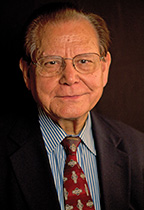 Surendra Singh
Surendra SinghNewman University
After more than six years of graduate studies and research at state universities in New Mexico, Surendra Singh came to Wichita in 1968 to explore a faculty position at what was then Kansas Newman College. From the window of a plane descending on the city, he saw endless miles of wheat and corn—surprisingly familiar to a man raised 7,940 miles away, in the agricultural center of Agra, India (best known as the home of the Taj Mahal).
Singh thought to himself: “This looks like home.” And soon, it was: For the better part of the next half-century, Singh would become a fixture not just at Newman, but in Wichita’s medical community and the city itself. “I was hoping to be here for a year or two,” he says. “When I started teaching, this was the smallest school I ever went to. All my personal schooling, there were 15,000 to 30,000 enrolled. I had seen the teaching there and did not like the huge classes, with a professor holding a microphone and lecturing to 500 students in a class. I said ‘I don’t want to do that rest of my life.’ ”
Instead, he took his knowledge of life sciences—degrees in biology, chemistry and botany—and went to work building a robust science curriculum at the small Catholic college. By the time he went into semi-retirement last year (he still keeps office hours three days a week), Singh had developed and implemented 16 degrees or programs—an average of one every third year. Almost all of them, he said, were the result of an early career awakening. “When I got involved in teaching, students would graduate and some were not finding jobs; that hurt me very much,” he says. “Here was a person who did everything asked of them, took the courses asked and graduated, but had no job. That’s when I started looking at which kinds of jobs were needed in the community.”
Subsequent collaborations with area hospitals, health-care organizations and related businesses led to degree programs in fields like cytotechnology, nurse anesthesia and radiologic technology—courses one might expect at a medical college, but not a small liberal-arts program. He would write program proposals, secure funding from outside sources, and develop a curriculum. In the end, he changed lives, and many of those former students, including some of the 200-plus who have gone on to become physicians, are still in touch. From that, he derives “professional satisfaction. In the classroom, I prepare and motivate them to achieve career goals,” he says. “But I was more concerned about what happened after they graduated.”
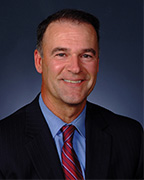 David McGehee
David McGeheeLee’s Summit School District
Life threw a lot at young David McGehee before things stabilized around middle-school age, when his mother married his stepfather. Education, though, would help close the gap on what he missed out on early. “I don’t remember a lot about my childhood in detail,” says the superintendent of the Lee’s Summit school district, but “I do remember my kindergarten teacher and her loving and caring nature for kids like me.” Just before graduating from Boonville High School, he had the good fortune to encounter a small-college football coach, Ken Gibler. “It is very likely I would never have gone to college if he had not walked into my school my senior year,” McGehee says. “He provided a great example for me while I was at Missouri Valley College getting my undergrad degree to teach and coach.”
Since then, McGehee—the first in his family to go to college—has moved through the ranks of K-12 education as a teacher, principal and small-district superintendent, ultimately taking the helm of one of this region’s largest, most highly regarded and academically successful public school systems. His is a career marked by serendipity. “Education just kind of happened for me,” he says. “I didn’t really have an interest in a particular career,” so he followed his interests in science and sports. As a young teacher taking classes at Drury University “to further myself on the salary schedule,” he says, a professor suggested that he consider administration. He followed that counsel, becoming principal in a small district because he had a “feeling like the four walls of the classroom were becoming a barrier to my influence on the school as a whole,” he says. “Superintendency just seemed to fit me.”
In Lee’s Summit, it fits because “there are great systems and processes in place,” he says. “We don’t try to reinvent every time there is a challenge.” Success there is also grounded in attracting excellent teachers and being in a supportive community: “While I would like to say we have the secret to turning around other schools, that just isn’t the case,” he says. “There are so many social and economic factors that play into the difficulty in aligning all the efforts needed to be successful in education.”
One major upside of his career path: His daughters were able to graduate from his district’s schools, both reaping the benefits of IB diplomas. In part through their experiences, he’s developed a vision focusing on the needs of each student in the district. “I am very grateful to have had the opportunity for my daughters to be exposed to great teachers and programs,” he says. “It has definitely prepared them for whatever their own version of success in life ends up being.”
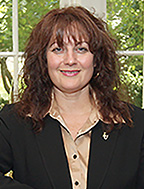 Cynthia Bice
Cynthia BiceLindenwood University
It’s about as close as you can come to having an educational career fused into your DNA; “Both of my parents,” says Cynthia Bice, “were rock-star educators.” Her mother’s career started at age 18, in a one room school house in southeast Missouri; her father was a principal who was respected by his students and believed in second changes. “His students,” Bice says, “often commented to me about how he had given of his time and energy, and that his believing in them made a life-altering difference” in their own lives.
That background gave shape to Bice’s own award-winning career in education, which has spanned both K-12 public schools and private colleges in Missouri. She was Most Influential Teacher for the Rolla school district’s National Honor Society in 2001, Employee of the Year for the Vacation Station program in the Francis Howell School District in 2006, won Best of the Best honors from StreetScape magazine in 2011 and was named Educator of the Year by the St. Louis Association of Secondary School Principals in 2014.
Before returning to Lindenwood, where she earned her bachelor’s, Bice worked at Drury University in Springfield, a role that took her from K-12 into higher education. “I remember it being a very hard decision because I had set high goals for a public school administration career,” she says. As she pondered making that leap, there was plenty of evidence that she had been a positive influence on students in the K-12 range, she says, but “I wondered how that influence could increase as I would begin a new career of training new educators.”
When the Lindenwood opportunity arose in 2006, Bice knew she had the ideal fit. “I had always used the experiences at Lindenwood as my gold standard for how I treated students at public schools and at Drury,” she said. “It was a perfect match and great opportunity to return to LU and give back to the university that was so influential in my own early career decisions.”
Today, the guidance she received from her parents still shapes her views of teaching.
“Student struggles and success stories of our graduates feed my passion to keep working to create a better educational environment for all,” Bice says. “My father instilled in me from an early age the belief to whom much is given, much is expected. I came to a full understanding of that philosophy when I sought out the opportunity to earn my doctorate. The passion has been burning very since that time.”
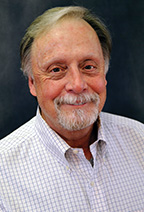 Terry Martin
Terry MartinWilliam Woods University
“I can’t think of any other kind of teacher I could have become than an art teacher.”
That’s how Terry Martin synthesizes what steered him to a lifetime of art instruction and his place in it at William Woods, the liberal-arts college in Fulton, Mo.
Since 1989, he’s been teaching students about art, but it’s not just about art. He teaches at the confluence of art, environment, spirituality and social engagement. It is a very busy intersection. It is a set of views shaped by a simple belief: “I am a Christian,” Martin says, “and I want to be a responsible and caring shepherd.”
Campus officials say he fosters in his students a love of nature, as well as art, and he introduces them to the idea of community service, collaborating with professors in other departments that don’t immediately come to mind when one thinks of art, such as psychology and social work.
Those efforts underpin his belief in the need for academic service-learning, allowing students to apply what they learn in the classroom to real-world problems in their communities. How?
With art therapy to support various causes, like support for Joplin residents following the 2011 tornado, or by aligning with the Dream Factory to provide art therapy for children who are critically or chronically ill. By crafting greeting cards that soldiers deployed overseas can send their loved ones, or paintings to brighten the walls of organizations like SERVE, a local agency for the underserved, or the exam rooms of St. Mary’s Creektrail Clincs in Jefferson City. His is a long list of contributions to the notion that art heals. “When we come together in creative pursuits,” Martin says, “it fosters community and makes us forget things that may divide us.”
He’s a native of the Missouri Ozarks, the son of a college professor and an English teacher, and succinctly describes his childhood thusly: “I grew up with a brother, a dog, a bicycle and a fishing rod.” Life in the Ozarks, he says, shaped his awareness and interest in nature. “Ultimately, I turned to conservation and a deep respect for the work of the Missouri Department of Conservation sustained much of what I hoped to experience outdoors.”
He worked in public schools in the state before coming to Williams Woods, but found a home in Fulton, he says, because of “a wonderful administration who sees my strengths and supports me in a most amazing way, always trusting my projects and the community service I am most interested in.”